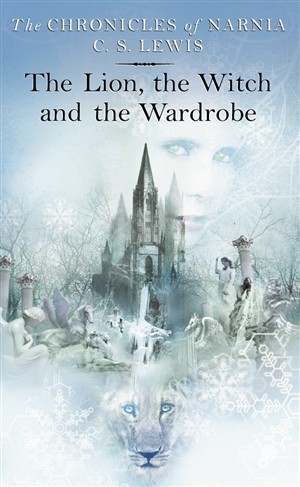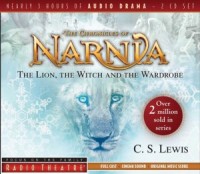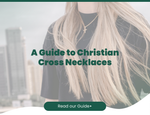Walking Through The Wardrobe With A New Generation
James Warwood
An inquisitive little girl once asked C.S. Lewis what was behind an old wardrobe he kept upstairs. Nearly ten years later, Lucy Pevensie walked through that wardrobe and into the wonderfully imaginative world of Narnia. I’m guessing that if you’re reading this, you’ve pushed aside the fur coats and walked through the wardrobe too. And now that you’ve become a Christian parent, what’s the best way to pass on the magical adventure to your kids.
The Purpose of Narnia
Back in the 1940’s Lewis was talking with his university friend, J.R.R. Tolkien, about children’s literature. The Oxford graduates were complaining that no one was writing what children needed – strong moral values. Nor was anyone writing books that they themselves would have loved as children.
From that pivotal conversation Tolkien went on to write ‘The Hobbit’ and Lewis went on to write ‘The Lion, the Witch and the Wardrobe’.
So what exactly was Lewis’ purpose for the Chronicles that has captivated children and adults for over half a century? The assumed purpose was to teach children Christianity through allegories within a fictional world. This is a common misconception, or as Lewis buts it:
“This is all pure moonshine. I couldn't write in that way … At first there wasn't anything Christian about them; that element pushed itself in of its own accord.” – C.S. Lewis in ‘Of This and Other Worlds’, an essay collection edited by W Hooper.
Interestingly, Tolkien disapproved of his friend’s book, questioning the mythological influences and the quality of his writing. His publishers doubted the books potential, persuading Lewis to write a series to boost sales and the initial reviews were far from complimentary. Despite all this, ‘The Lion, the Witch and the Wardrobe’ has sold more than 85 million copies in 29 different languages.
‘The Chronicles of Narnia’ does something no text book could explain, no teacher could educate or no Sunday school class could pull off. C.S. Lewis 're-imagined' the Christian story and wrote it all down for children to enjoy and experience. Something Lewis himself called “a sort of pre-baptism of the child's imagination”.
Which Book Should Your Kids Read First?

This highly debated subject is the golden question.
One argument would say the Chronicles should be read in the order Lewis wrote them (starting with ‘The Lion, the Witch and the Wardrobe’), and others argue they should be read in Narnia’s chronological order (starting with ‘The Magician’s Nephew’). Both have a good point, but I would argue for putting ‘The Lion, the Witch and the Wardrobe’ in a child’s hand first.
“This must be a simply enormous wardrobe!” thought Lucy, going still further in and pushing the soft folds of the coats aside to make room for her. Then she noticed that there was something crunching under her feet. “I wonder is that more moth-balls?” – from the opening chapter of ‘The Lion, the Witch and the Wardrobe’.
The wardrobe experience, when the inquisitive young Lucy first steps onto “something soft and powdery and extremely cold”, is a breathtaking introduction to Narnia. Similarly, the revelation within ‘The Magician’s Nephew’ when you realise the wardrobes wood was made from the stolen acorn and discovering where the lamppost come from are wonderful moments in the Narnia tales.
Reading ‘The Magician’s Nephew’ first spoils the initial adventure through the wardrobe. Yes the story of creation comes first, but its better to walk through the wardrobe first rather than reading the story how it came into being (in my opinion).
Read, Listen or Watch – It’s Your Choice
Read:
Having wrote his books in war-time Britain, Lewis naturally used the lingo of his day. If your kids are strong reads, taking on books like the larger Harry Potters with lots of chapters and no pictures they’ll read the Chronicles of Narnia in no time.
If reading isn’t your kid’s strength, then you can always read the books alongside them (which is what my big sister did for me). For extra fun, I’d suggest finding a closet or wardrobe and read the opening chapters of ‘The Lion, the Witch and the Wardrobe’ in torch light amongst the hanging clothes.
Listen:

With the invention of audio books, reluctant readers can enjoy the written word as spoken word. ‘The Lion, the Witch and the Wardrobe’ has been made into a theatrical performance by the Focus on the Family team. With sound effects, several voice actors and a soundtrack, all recorded in a professional studio, this 2 CD version is arguably more enjoyable than reading the book.
The audio book is great for keeping kids entertained on a long car journey and rainy days.
Watch:
Lewis was approached by every film company around to sell the rights to his works. He never sold them, as he felt the technology couldn’t capture his talking creatures and mystical world. With the dawn of the next century, Hollywood has made major development which meant Lewis’ stepson decided it was time to put Narnia on the big screen.
Of course the films can never quite live up to our imaginations, but kids everywhere have been introduced to Narnia and caught the bug. And if you’re especially keen (or still a fan yourself), theatre companies up and down the country perform ‘The Lion, the Witch and the Wardrobe’, which I can thoroughly recommend.
When your kids are grown up, and they have children of there own, which books will they encourage them too read? My hope is that it will continue to be Narnia helping new generations to discover the Christian message (so let’s hope Harry Potter won’t shut the wardrobe door just yet).
Latest Blogs

Gifts
Finding Your Symbol of Faith: A Guide to Christian Cross Necklaces
Looking for the perfect symbol of faith? Explore our guide to Christian cross necklaces, from rustic wooden designs and sturdy men's chains to elegant silver pendants.

Gifts
The Best Christian Gifts for Under £20
Looking for a meaningful gift that won't break the bank? Explore our guide to the best Christian gifts under £20, from inspiring journals to beautiful home decor.

Gift Guide
15 Confirmation Gift Ideas for Boys and Girls
Celebrating a confirmation? Discover 15 meaningful gift ideas for boys and girls, from youth Bibles and jewellery to inspiring journals and keepsakes.

Bible
30+ Powerful Quotes About the Bible (For Inspiration in 2026)
Looking for inspiration? Discover a curated collection of the most powerful quotes about the Bible, from famous historical figures to modern theologians and Scripture itself.

Bibles
What is the "Standard" Bible for Christians?
Is there an "official" Bible that all Christians use? We explain the difference between the NIV, KJV, and ESV, and help you find the standard text for your church or personal reading.

Bible
"I Keep Failing to Read the Bible" – 5 Tips to Make the Habit Stick
Do you start a Bible reading plan only to quit a few weeks later? Stop the cycle of guilt. Here are 5 psychological tips and practical changes to help you build a Bible habit that actually lasts in 2026.
